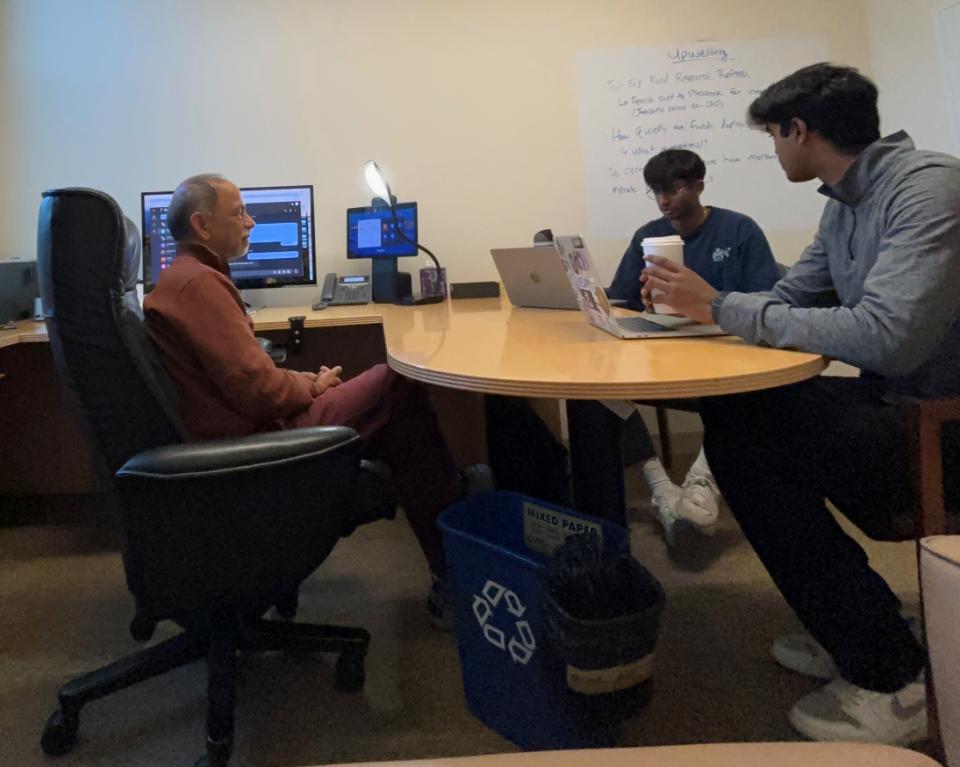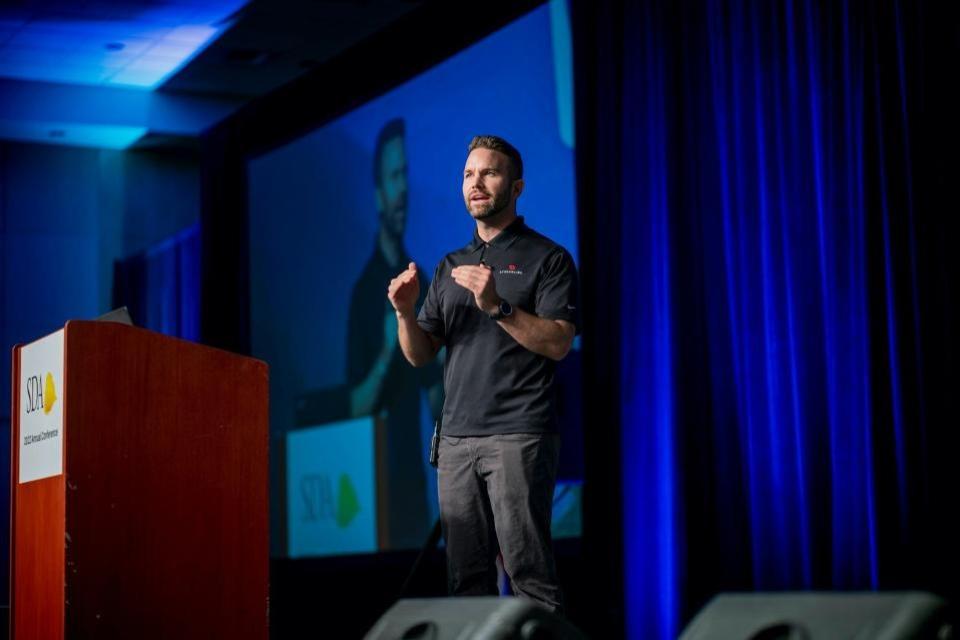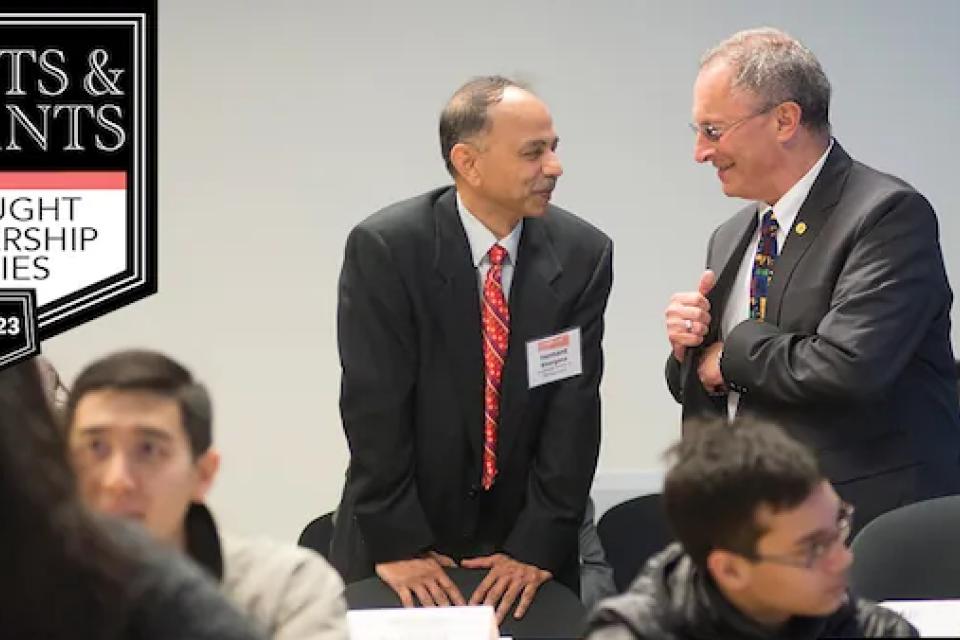Untangling GovTech: What We Learned Building Platforms for the Most Overlooked Layer of Government
Our opportunity to “Streamline” a UC Davis alum’s digital services startup

When people talk about GovTech, they usually point to large-scale platforms for states, counties and cities.
But hidden beneath that are special districts: a dense, fragmented layer of government responsible for fire protection, water management, mosquito abatement and more. It's a critical space. And it’s also one of the most neglected.
Through our internship at Streamline, a Sacramento-based Series-A startup founded by UC Davis Graduate School of Management alumnus Mac Clemmens MBA 07, we immersed ourselves in this nuanced space.
Streamline builds modern digital infrastructure for special districts, including websites and compliance tools. Over the course of our internship, we worked on everything from pricing models and market segmentation to user research and product analytics.
Along the way, we discovered that this layer of government doesn’t just need better software. It needs a new digital identity that prioritizes compliance and enhances community engagement.
Landing Our Internships Through CATS
Our experience on the Center for Analytics and Technology in Society (CATS) team at the Graduate School of Management (GSM) shows UC Davis's commitment to empowering students to grow beyond the classroom.
Under the guidance of GSM Distinguished Professor Hemant Bhargava, director of CATS, we explored everything from AI regulation and startup consulting to organizing high-impact events like aiMPACT. Just as valuable were the ongoing conversations we had—about our career goals, evolving tech trends, and how industry and academia can work together in meaningful ways.
Our internship opportunity with Streamline grew out of these interactions, paired with Professor Bhargava’s ongoing dialogue with Streamline CEO Mac Clemmens. What started as a fall consulting project through CATS—where we analyzed acquisition opportunities—turned into something more. After we demonstrated our skills and drive, Clemmens offered us internships starting in January 2025.
At Streamline, we dove into real-world strategy and operations, and had the chance to make an impact on the company’s growth while learning firsthand how a GovTech startup runs.
Why B2G Feels Like Playing on Hard Mode

Selling into the public sector isn’t like selling into startups or mid-market companies. It follows different rules entirely:
- Sales cycles are long. Even small-dollar deals take a long time, often with multiple weeks of follow-up, especially in agencies with smaller departments or limited technical support.
- Tech conservatism dominates. Many districts are managed by a single admin juggling multiple responsibilities. Change is scary and budgets are fixed, disincentivizing a move away from legacy systems.
- Market growth is flat. New districts don’t just appear. You can’t just chase new logos. In fact, you have to re-engage old ones.
These constraints shaped everything we did. We created internal tools to score digital readiness, such as tracking how recently a district had updated their website. This became a key signal for prioritizing leads.
Why Traditional SaaS Playbooks Don’t Work
In most SaaS companies, go-to-market strategies are built around high average contract value deals and land-and-expand motions. But in the special district space, logo count matters more than revenue concentration.
We retooled our approach to fit the long tail by:
- Developing a new pricing model to support the low budget districts—introducing a component-based structure that let districts pay for only what they needed.
- Refreshing lead scoring using signals like how frequently districts updated their agendas and public notices, rather than just organization size and budget.
- Segmenting the market by digital maturity, not just population served.
Most districts didn’t know what CMS meant, let alone what ADA compliance required. As such, sales calls are just as much about education as they are about positioning.

Benchmarking the Status Quo
As we tried to position ourselves in the market, we evaluated incumbent solutions. This included WordPress-based websites and barebones site builders.
Common patterns included:
- Static content and PDFs were rarely searchable or accessible.
- No e-signature support, no emergency alerts, and minimal document organization.
- Flat-fee pricing with little customization or flexibility.
- Compliance and accessibility treated as afterthoughts.
We were one of the most robust options available and used that position to emphasize value. Our positioning was crafted around thoughtful defaults, customizability, and built-in support for governance, accessibility, and transparency. Despite this, digging deeper into the market unearthed an undeniable roadblock.
The Hard Truth
Finding product-market fit is a defining challenge for every startup, and Streamline was no exception.
Through our pricing work, we uncovered a hard truth: even at the level of the largest districts, customers would opt for cheaper alternatives. Despite offering the most robust feature set on the market, Streamline was missing the mark on willingness to pay. The tough pill to swallow was that we had little chance of capturing the long tail at our current price point.
The pricing problem created questions about the value of our offering as a whole. Identifying this issue helped surface a critical gap between us and the market: smaller, budget-constrained districts were unable to afford us.
We found that customers simply did not value all of the features in Streamline’s product. The core problem districts were trying to solve had little to do with website design or a dynamic content management system. It was about accessibility compliance, an issue that is complex, high-risk and prohibitively expensive. That insight would ultimately shape Streamline’s next strategic move.

Lighting the Path Forward
Legal risk around ADA compliance was so high, and the cost of remediation so steep, that some agencies had stopped publishing public records altogether. For a company rooted in public access and trust, this was more than a missed opportunity. It was a call to build.
Document accessibility had long existed on the roadmap. But with fresh data, leadership alignment, and a clear use case, the company moved quickly.
In just six weeks, Clemmens and the engineering team shipped what would become DocAccess: a lightweight, purpose-built tool for document compliance. The product offers scanning, translation, AI-powered interaction, and live human support via a new partnership with Aira—all starting at just six cents per page. More importantly, it changes how Streamline shows up in the market.
In fact, Streamline was recently featured among the GovTech100, an annual list compiled and published by Government Technology as a compendium of 100 companies focused on, making a difference in, and selling to state and local government agencies across the U.S.
Streamline is no longer just a website vendor for special districts. It’s a compliance partner for the entire public sector.
DocAccess massively expands the company’s total addressable market (TAM), lowers customer acquisition cost (CAC) and reframes its sales motion around something urgent, necessary and accessible. The go-to-market team has realigned behind it, and the brand is evolving to match.
For government entities navigating lawsuits, budget constraints and outdated infrastructure, DocAccess doesn’t just offer a solution; it restores the option to show up.
Closing Thoughts: Why This Work Matters
We were grateful for the hands-on experience working on core strategy problems for a growing company, but even more importantly we learned about the importance of high character and being customer obsessed.
Clemmens shared a story that stuck with us. On a flight, he met a blind woman who told him her local district’s website had never been accessible—until recently. For her, it wasn’t about ADA compliance. It was about dignity and access.
Success in this industry comes to those who operate at the intersection of doing well and doing good and Clemmens’ leadership reflects that mission.
The future of GovTech doesn’t belong to the biggest contract or the flashiest startup. It belongs to the teams willing to do the quiet, difficult work: revisiting cold leads, educating non-technical buyers, modernizing legacy workflows, onboarding the long tail, and creating customer identity.
One district at a time.

